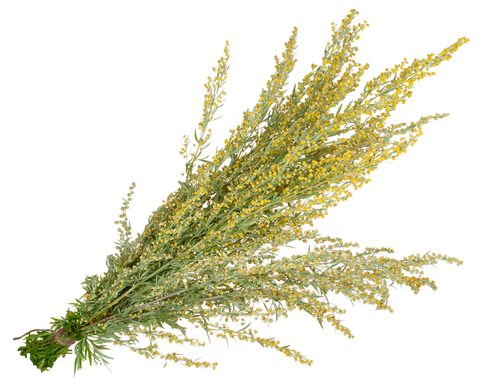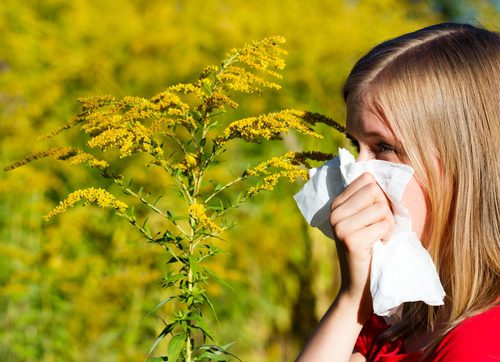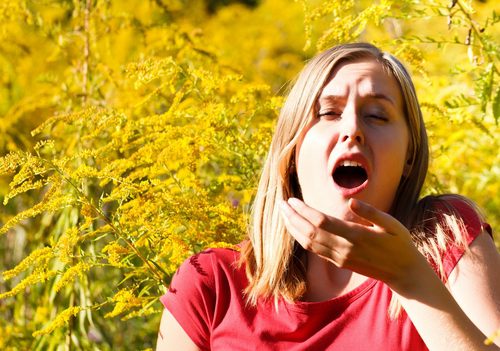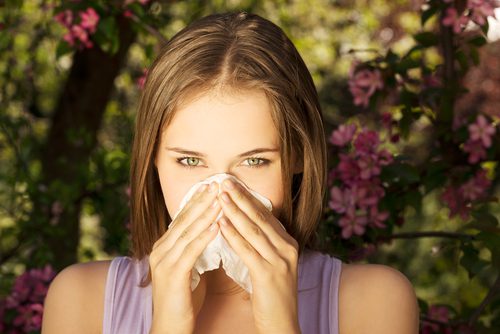Lori Ballen, the owner of this website, benefits from purchases made through her affiliate links.
As an Amazon Associate, I earn from qualifying purchases. Some links on this site are affiliate links. Portions of this content are generated by AI.
Las Vegas has come a long way ever since it was first discovered in the early 1800’s. This city is situated in the state of Nevada and is one of the biggest cities in the United States. With an estimated population of over two million people. Las Vegas was established on modernism and new beginnings. Currently, more than 100 years later, Las Vegas has only strengthened its dedication to the early principals that it was built upon.
[su_youtube_advanced url=”https://youtu.be/x0GsKRvFtzA” width=”1000″ showinfo=”no” rel=”no” https=”yes”]
[su_button url=”https://homes.ballenvegas.com/i/cta” target=”blank” style=”flat” background=”#ffc61e” size=”9″ wide=”yes” icon=”icon: home” icon_color=”#ffffff” title=”See Homes Just Listed in Las Vegas”]Click to see Just Listed Homes with Map![/su_button]
What is an allergy? 
An allergy is a particular immunologic response to a harmless substance, and it does not trouble most people. The matter that causes an allergy is known as an allergen.
Persons who have an allergy often are receptive to a variety of substances. The kind of allergens that are the root of allergic effects includes pollens, mold spores, dust particles and many more. More than 45 million American citizens suffer from allergic conditions.
Usually, the immune system is tasked to safeguard the body against invading substances such as viruses and bacteria. When an allergic individual first comes into contact with an allergen, the immune system treats it as a foreign body and instigates an attack. Spring allergies are widespread in Las Vegas with the principal culprits being pollen, juniper, and mulberry. Weeds also cause allergic reactions. During the spring, pollen is on the rampage.
You might also like: 8 Free Things To Do in Las Vegas
[su_divider]
Types of plants in Las Vegas that cause allergies
The kind of pollen that causes allergic symptoms in Las Vegas comes from plants (trees, weeds, and grasses) that characteristically do not bear flowers or fruit. These plants generate small, light, dried up pollen grains in bulk quantities that are carried through the air for long distances.
In Las Vegas most of the allergen-producing plants are not native trees and bushes watered by rain, but exotics planted by people and watered via sprinklers.
[su_divider]
Common plant allergens
 Weeds, such as sagebrush, ragweed, redroot pigweed, goosefoot lamb’s quarters, English plantain and tumbleweed (Russian thistle), Grasses, such as Kentucky bluegrass, timothy grass, Johnson grass, redtop grass, Bermuda grass and orchard grass, sweet vernal grass, velvet grass, fescue and salt grass.
Weeds, such as sagebrush, ragweed, redroot pigweed, goosefoot lamb’s quarters, English plantain and tumbleweed (Russian thistle), Grasses, such as Kentucky bluegrass, timothy grass, Johnson grass, redtop grass, Bermuda grass and orchard grass, sweet vernal grass, velvet grass, fescue and salt grass.
Hardwood short-term trees, such as ash, oak, elm, maple, birch, hazel, and alder, as well as pecan, hickory and mountain cedar. Juniper, cypress, Sequoia and cedar trees are also liable for causing allergic symptoms.
White Mulberry-this is a deciduous fast-growing tree with its origins in China, however, is commonly cultivated and at times adopted in the US. The genus grows up to 60-ft in height and has large, green, occasionally dissected leaves, and produces a large amount of pollen and fruit.
Owing to the pollen allergies, the White Mulberry is considered as a pest in some regions, and it is illegal to plant it in Las Vegas. Nevertheless, the fruit is enjoyed by migrant and desert birds. Even the insectivorous birds such as the Western Kingbird devour on its fruits during the spring exodus.
Even though the planting of European olive and mulberry trees were banned in Las Vegas in the 90’s, pollen levels keep on increasing rapidly as the surviving trees grow bigger.
Others have read: Best Las Vegas Steakhouses, Many Open as Early as 4PM
[su_divider]
When do plants make pollen?
 The most obvious features of pollen allergies are its seasonal character- many people experience the syndromes only when the pollen grains that they are sensitive to are in the air.
The most obvious features of pollen allergies are its seasonal character- many people experience the syndromes only when the pollen grains that they are sensitive to are in the air.
Every plant has its pollinating season that is relatively the same every year. Precisely when a plant starts to pollinate it seems to rely on the comparative length of day and night and consequently on the physical location instead of the weather.
Also, weather conditions at the time pollination can have an effect on the quantity of pollen produced and disseminated in a particular year.
A pollen tally, which is recognizable by most people from Las Vegas weather reports, is an assessment of the amount pollen that is in the air. This tally represents the clustering of all the antigens (or of one single type of allergen, such as ragweed) in the air in a certain area at a particular period.
It is expressed in granules of pollen per square meter of the air amassed over 24 hours. Pollen tallies have a tendency to be high in the early morning hours on hot, dry, windy days and lowest in cold, wet periods. Even if a pollen count up is an estimate and irregular measure, it is helpful as a general guide for when it is suitable to stay inside your home and avoid making contact with the pollen.
Most people cannot differentiate between pollen allergies and colds. Both demonstrate comparable symptoms such as itchy eyes, running nose, and congestion. There are a few ways to tell the difference between cold symptoms and seasonal allergy symptoms.
With a cold, a running nose generally has a thick, yellowish discharge, while a running nose from recurrent allergies results in a thin, dilute discharge.
According to doctors, most colds should fade away within three days; however, allergies can extend for several months.
Check out: The 34 Best, Most Honest Mechanics in Las Vegas and Henderson, Voted by the Locals
[su_divider]
Local information
 Las Vegas weather comprises of sweltering temperatures during the summer, gentle winters and ample sunshine throughout the year.
Las Vegas weather comprises of sweltering temperatures during the summer, gentle winters and ample sunshine throughout the year.
If you always get the same kind of cold-like symptoms at about the same time every year, a cold may not be blamed for this condition. In most cases, this could be a symptom of seasonal allergies.
Actually, more than 1 out of 5 individuals have a medical condition of seasonal allergies. Luckily; this condition is easily treatable once you understand the cause of the allergies and ways of preventing the symptoms from recurring.
Seasonal allergies, christened by locals as allergic or rhinitis hay fever, are any allergic symptoms that transpire during certain interludes of the year.
These signs often occur in response to weather conditions that take place in certain seasons yearly. The majority of the common, seasonal allergies erupt during the spring when pollen particles and spores are released into the air by different plants and molds.
Predicaments associated with local ragweed pollen are generally seen in March through May, whereas the common ragweed found in the East and Midwest becomes messy between August and the first frost.
The common characteristic about ragweed pollen in Las Vegas, Nevada is that it is blown all over by the wind. It can go for several miles, and it can turn out to be severe for some people when they get an allergic reaction from it.
The Asthma and Allergy Foundation of America (A.A.F.A) recently ranked Las Vegas as the 36th most hostile place to reside in the United States due to the spring allergies.
Although seasonal allergies are widespread, it is essential to understand that this situation varies from one individual to another based on particular issues.
For instance, the kind of mold or pollen that a person is allergic to influences that symptoms he or she experiences and during the period when the symptoms occur.
Additionally, the region where an individual resides can also affect the extent to which the symptoms are experienced.
An allergic reaction to a poisonous plant is detected when the sufferers experience the usual allergic symptoms and develops the distinctive rash on their skin.
Warning signs of allergies to airborne substances. These symptoms are well-known to many people:
· Sneezing which is often accompanied by a running or clogged nose
· Coughing and postnasal trickle
· Itching eyes, nose, and gullet
· Allergic discolorations (gloomy circles under the eyes brought by amplified blood flow close to the sinuses)
· The allergic reaction in a child is characterized by unrelenting upward abrasion of the nose that causes a wrinkle mark on the nose.
· Watery eyes.
· Conjunctivitis is an irritation of the membrane lining the eyelids, causing red-rimmed, puffy eyes, and crusting of eyelids.
[su_divider]
Remedies
 There are various simple evasion ways to limit your contact to the molds or pollen that bring about the summer allergy syndromes. They are as well useful in the spring and fall allergies.
There are various simple evasion ways to limit your contact to the molds or pollen that bring about the summer allergy syndromes. They are as well useful in the spring and fall allergies.
– Keep your residence windows closed at nighttime, and if at all possible, use an air conditioner, which freshens, cools and dries up the air.
– Keep your car windows closed when traveling.
– Avoid going outdoors when the pollen or mold levels have been reported to be high.
– Avoid going to uncut grasslands.
– Do not mow lawns or rake up leaves since it stirs up molds and pollen. Also, shun hanging clothes or sheets outdoors to dry.
– Take a bath after getting home. These washes out the mold and spores stuck in your hair and also avoid them from bothering when you go to sleep.
– Get rid of mold from your home by repairing all leaking pipes and faucets and clean mold from the walls and basements.
– Decrease the moisture in your home.
– Take a holiday at the pinnacle of the pollen time of year to a more pollen-free region, such as the sea or beach.
[su_divider]
Can allergies be cured?
There are no known treatments for allergies; however, there are many successful ways to halt in its tracks and take care of them.
At the first indication of a rash, one should clean the affected areas of the skin with soap and clean water. The majority rashes caused by poison, oak poison, sumac or poison ivy are mild and can last from five to twelve days. In grave cases, the rash can go on for a month or longer.
Treatment should start immediately the symptoms develop. People who begin to experience signs of anaphylaxis, a persistent allergic reaction, must seek medical aid immediately.
 This may necessitate making the necessary changes in your surroundings or behavior to evade or diminish exposure to various allergens. Medical treatment also may help to alleviate allergy symptoms.
This may necessitate making the necessary changes in your surroundings or behavior to evade or diminish exposure to various allergens. Medical treatment also may help to alleviate allergy symptoms.
Even with sensitivity treatment, the body’s immune system may go on to react when in contact with allergens. In some situations, though, kids may outgrow their allergies. Doctors recommend allergy victims first to use over-the-counter medication.
If it does not work, consult a qualified physician.
Allergy shots or immunotherapy is not a cure. However, the shots aid by significantly lessening the symptoms brought by exposure to certain substances.
Doctors can determine what exactly is triggering your allergies, which can help you avoid exposure. For example, if you’re allergic to pollen, trees release most of it in the early hours of the morning.
Doctors may also recommend other types of medication and allergy shots. But, you have to be cautious with what you take, since at times it can harm more than it assists.
Your blood pressure blood pressure may increase due these are decongestants. Therefore, when you take them, they will compress the blood vessels in your nose and make the symptoms improved, although at the same time, if you have a high blood pressure medical condition, it can raise your blood pressure.
Locally in Las Vegas, some allergy victims use other antidotes such as honey or a “Las Vegas allergy mix”. This mix is a blend of natural ingredients that come in the form of drops. Las Vegas mix is designed particularly to momentarily reduce the syndromes of allergies related to the desert regions.
Other local remedies include rubbing essential lubricates, such as coconut oil or lavender, on your body.
Tests are also available to establish which pollen sources cause your allergies and aid to determine if a prescription drug or an allergy shot is appropriate for your treatment.
You might also like: Flemings Steak House at Town Square
[su_divider]
Conclusion
The itchy and occasionally painful rashes caused by coming into contact with these plants take place mostly during the summer, spring, and early fall, when people are likely to spend their time outdoors.
It is essential to seek treatment for seasonal allergies because they are capable causing other repulsive conditions, such as ear infections sinusitis or asthma. Although nearly all seasonal allergies are harmless, a severe reaction to an allergen exposure is still probable and must be treated.
With a simple general practitioner appointment and a few treatments, most individuals can manage these seasonal allergies reasonably well.
As an Amazon Associate, I earn from qualifying purchases. Some links on this site are affiliate links. Portions of this content are generated by AI.
